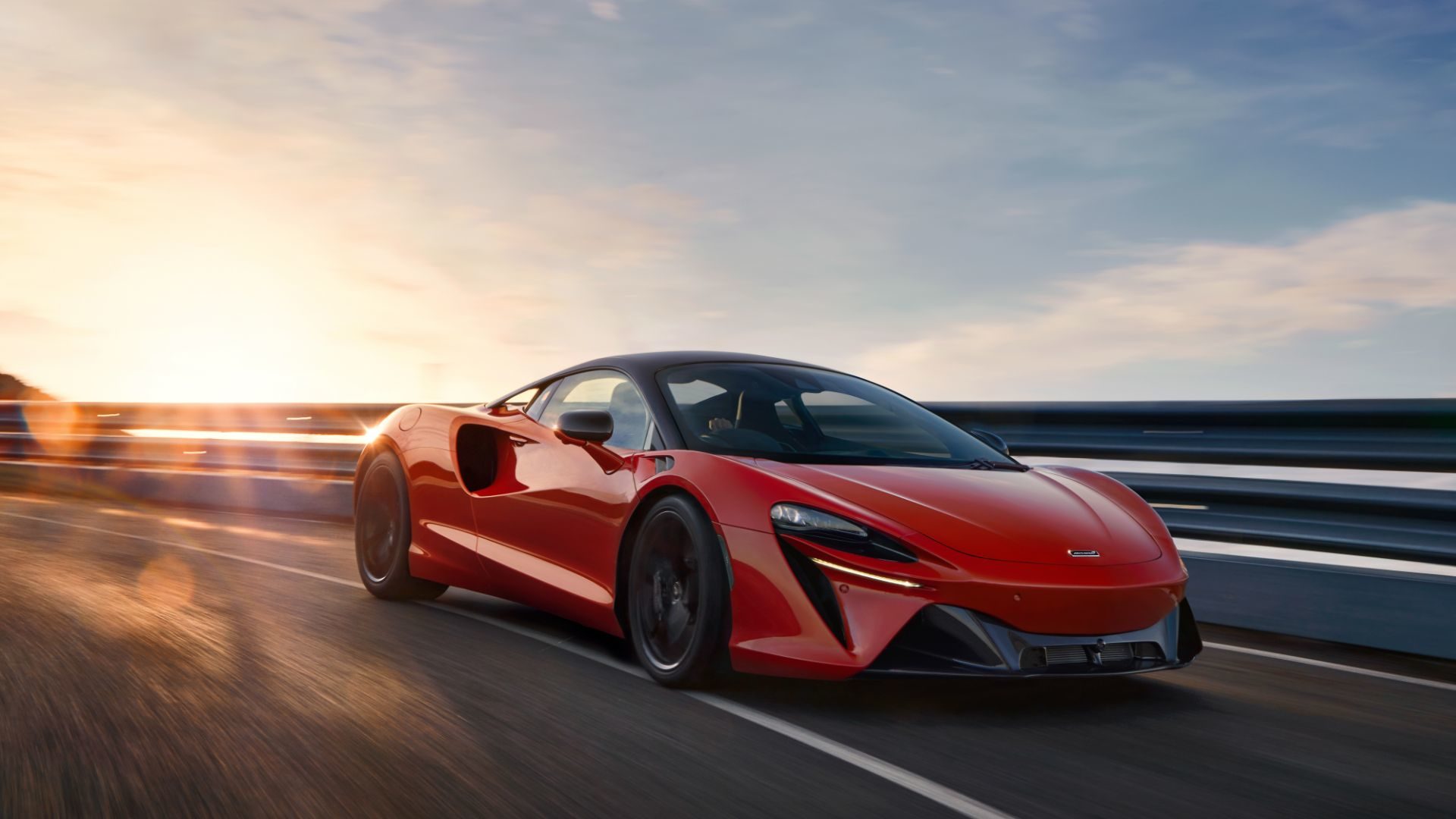
Hollow eye sockets from the 720S. Flying buttresses from the 570S. Laser-cut rear mesh from the 765LT. Yep, this is a McLaren alright. But while many details look familiar, the Artura is entirely new under the skin.
McLaren’s first plug-in hybrid, the Artura effectively replaces the ‘entry-level’ Sports Series range of cars: 540C, 570S, 570GT, 600LT and 620R. It pairs a 3.0-litre V6 petrol engine with an electric motor for a combined 680hp. Zero to 62mph takes 3.0 seconds and top speed is limited – yes, limited – to 205mph.
More remarkable, perhaps, are the electric-only range of 18.6 miles and CO2 emissions of 129g/km – making this easily the greenest McLaren ever. It’s available to order now, priced from £185,500.
We had a secret, hands-on preview of the Artura before it was revealed to the world. Read on for full details and our first impressions.
Let’s talk about six
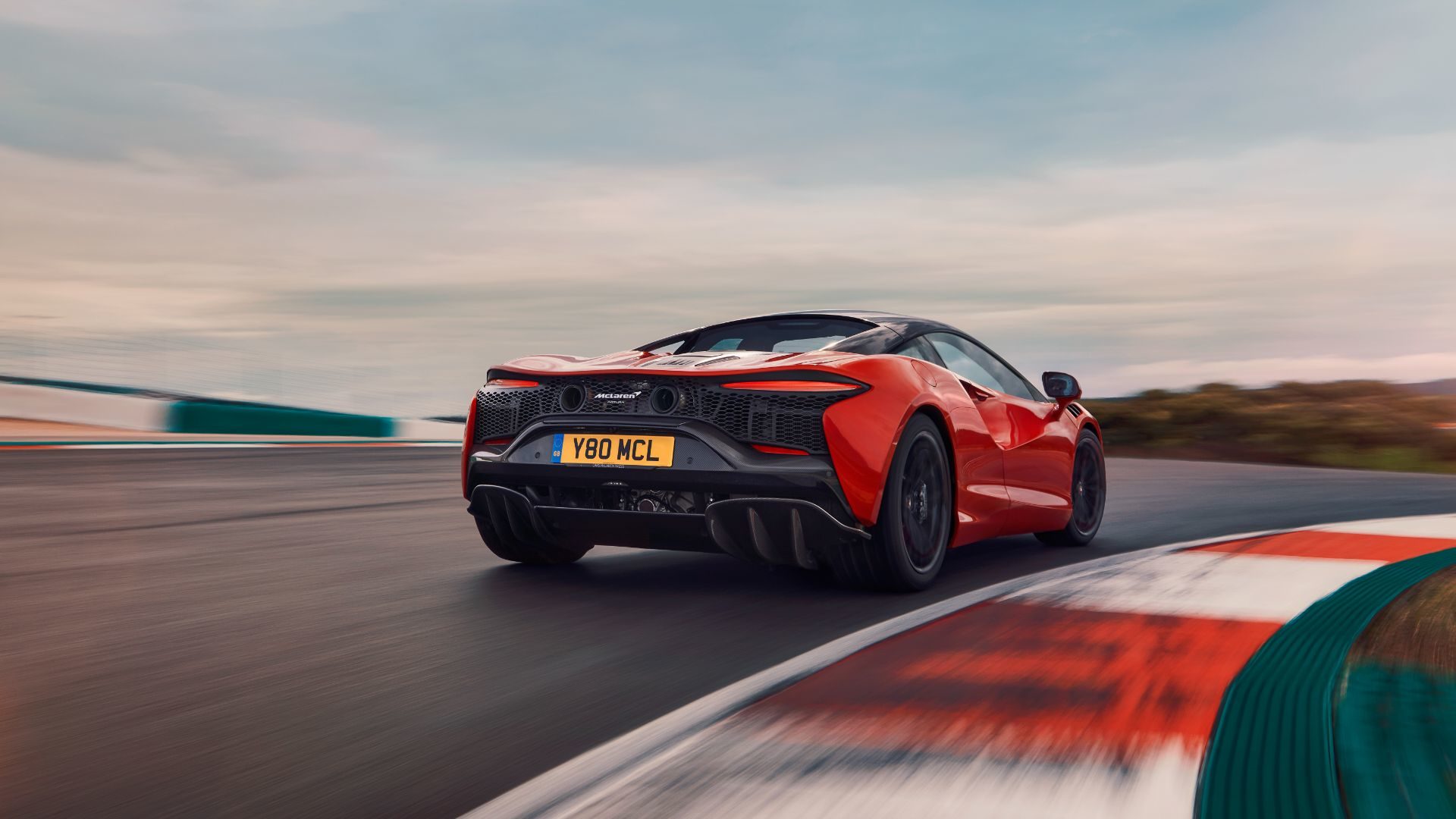
We’ll start with that new engine. McLaren Automotive’s faithful 3.8-litre M838 and 4.0 M840 V8s have served it for many years, from first-born MP4-12C to the Speedtail, but this is a clean-sheet design.
The 3.0 turbocharged dry-sumped aluminium M630 V6 is redlined at 8,500rpm and produces 585hp – nearly 200hp per litre – without electric assistance. Factor in the e-motor and the total is 680hp, plus 431lb ft of torque from 2,250rpm.
Twin turbos are positioned inside the ‘hot vee’ of the cylinders to lower the engine’s centre of gravity. The V6 is also 150mm shorter and 50kg lighter than the venerable V8 – important when there’s also a battery pack to lug around.
Batteries included
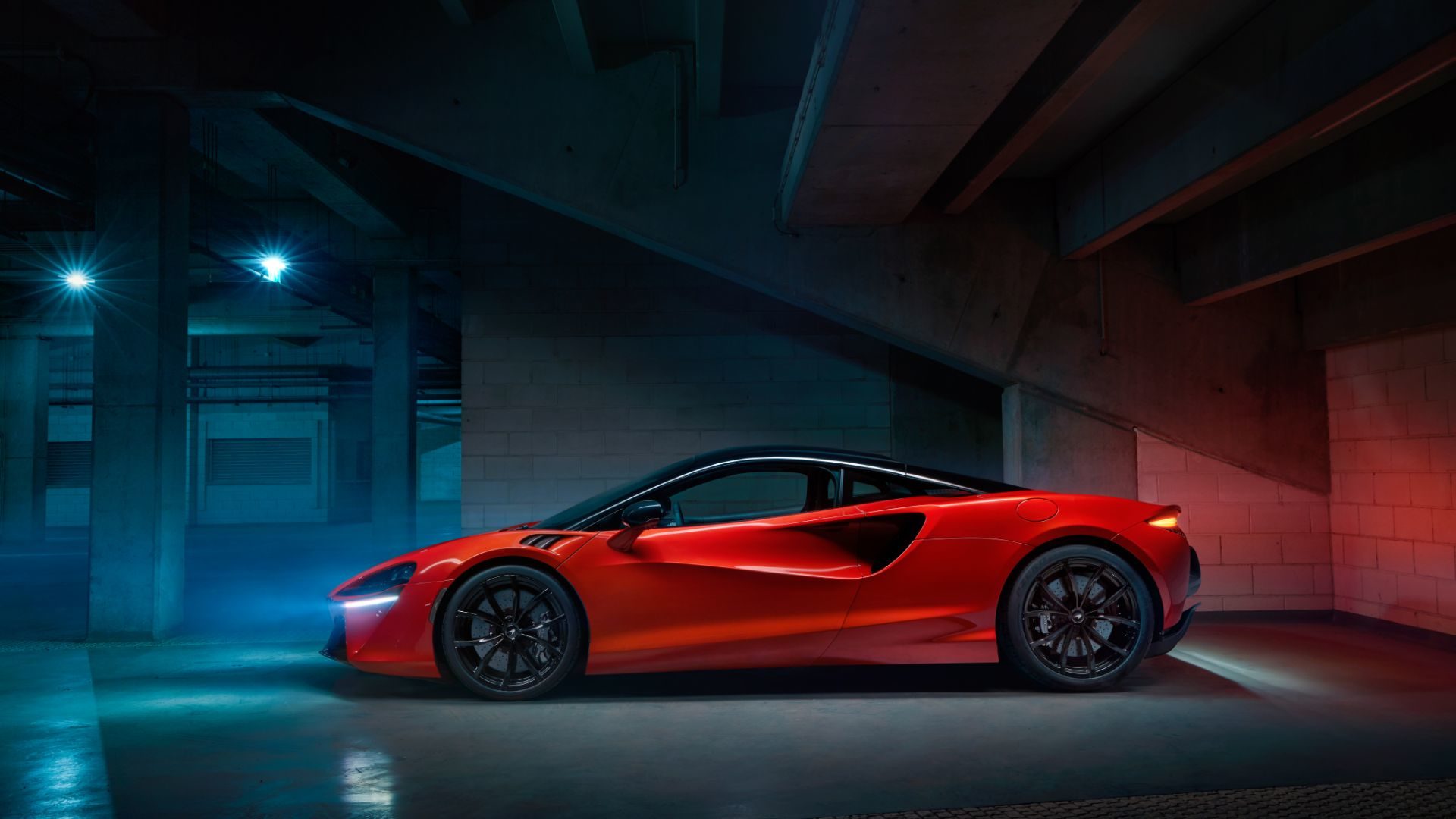
Onto the electric drivetrain. Back in 2013, the McLaren P1 was the first car to weaponise hybrid technology for performance, rather than purely efficiency. The plug-in system in the Artura does both.
Its innovative axial flux electric motor weighs just 15.4kg and produces 95hp. In addition to that 18.6-mile EV range, it propels the car at speeds up to 81mph. Drive goes to the rear wheels via an eight-speed twin-clutch transmission, but, interestingly, the McLaren doesn’t have a reverse gear – the e-motor simply spins the opposite way.
The battery pack contains five lithium-ion modules and can be charged from zero to 80 percent in 2.5 hours using a household three-pin plug. The Artura also boasts a world-first ethernet electrical system, which offers quicker response times and reduces wiring length by 25 percent.
Light is right
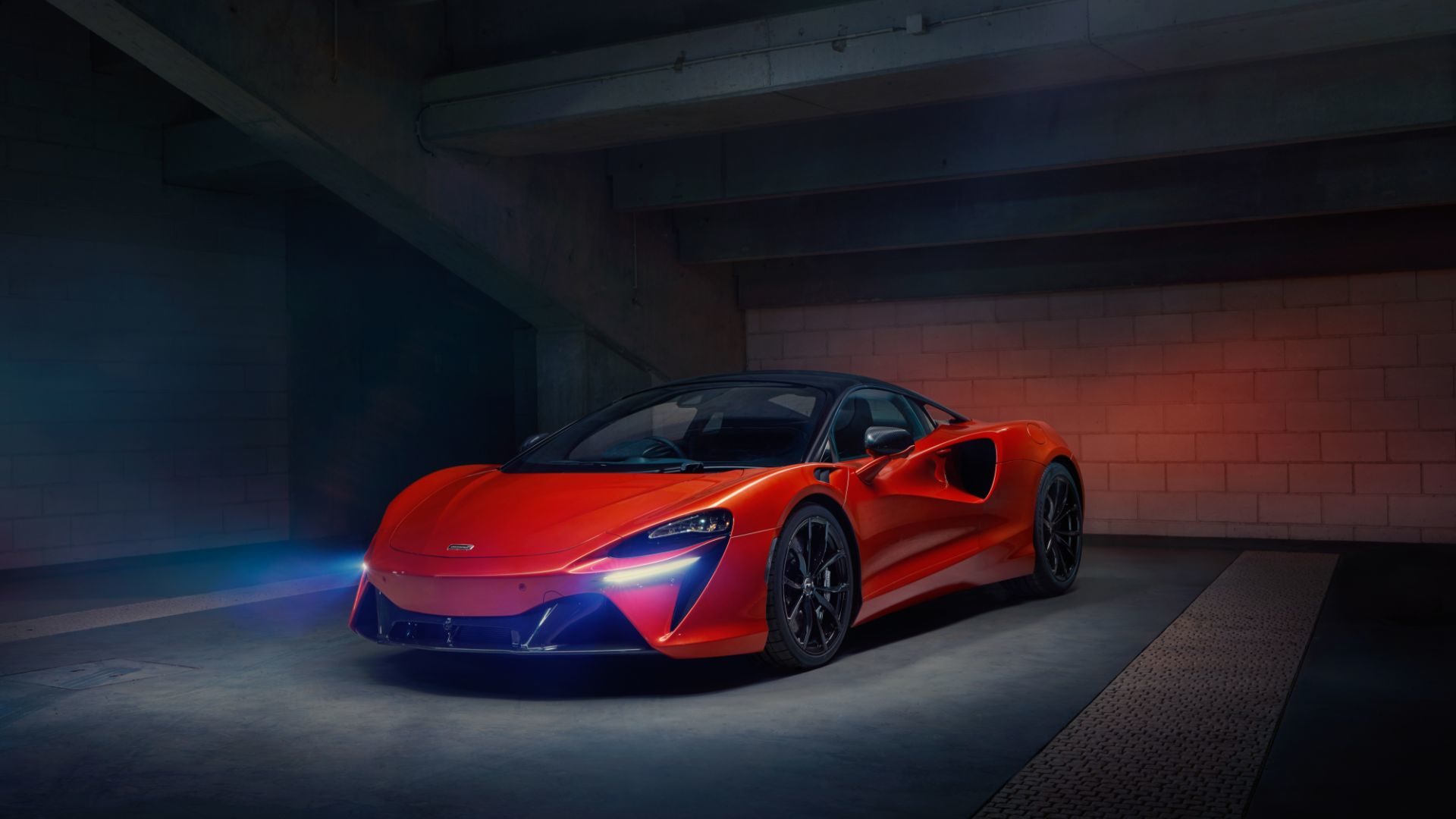
The Artura is based around a carbon fibre chassis produced at the McLaren Composites Technology Centre (MCTC) in Sheffield. The whole monocoque weighs just 82kg and is claimed to be the ‘lightest, stiffest and strongest’ in class. Aluminium subframes at both ends serve as deformable crash structures.
Specify all the lightweight options and the Artura tips the scales at 1,498kg; impressive given its 130kg of hybrid ballast. Dry weight without fluids – the figure often quoted by Ferrari, for example – is 1,395kg.
Pleasingly, McLaren has resisted the trend for ever larger and less usable supercars. The Artura’s footprint is almost identical to the 570S, with 19-inch front wheels and 20-inch rears. Tyres are bespoke Pirelli P Zero Corsas with an in-built electronic chip to relay data on temperature and pressure.
Sculpted by science
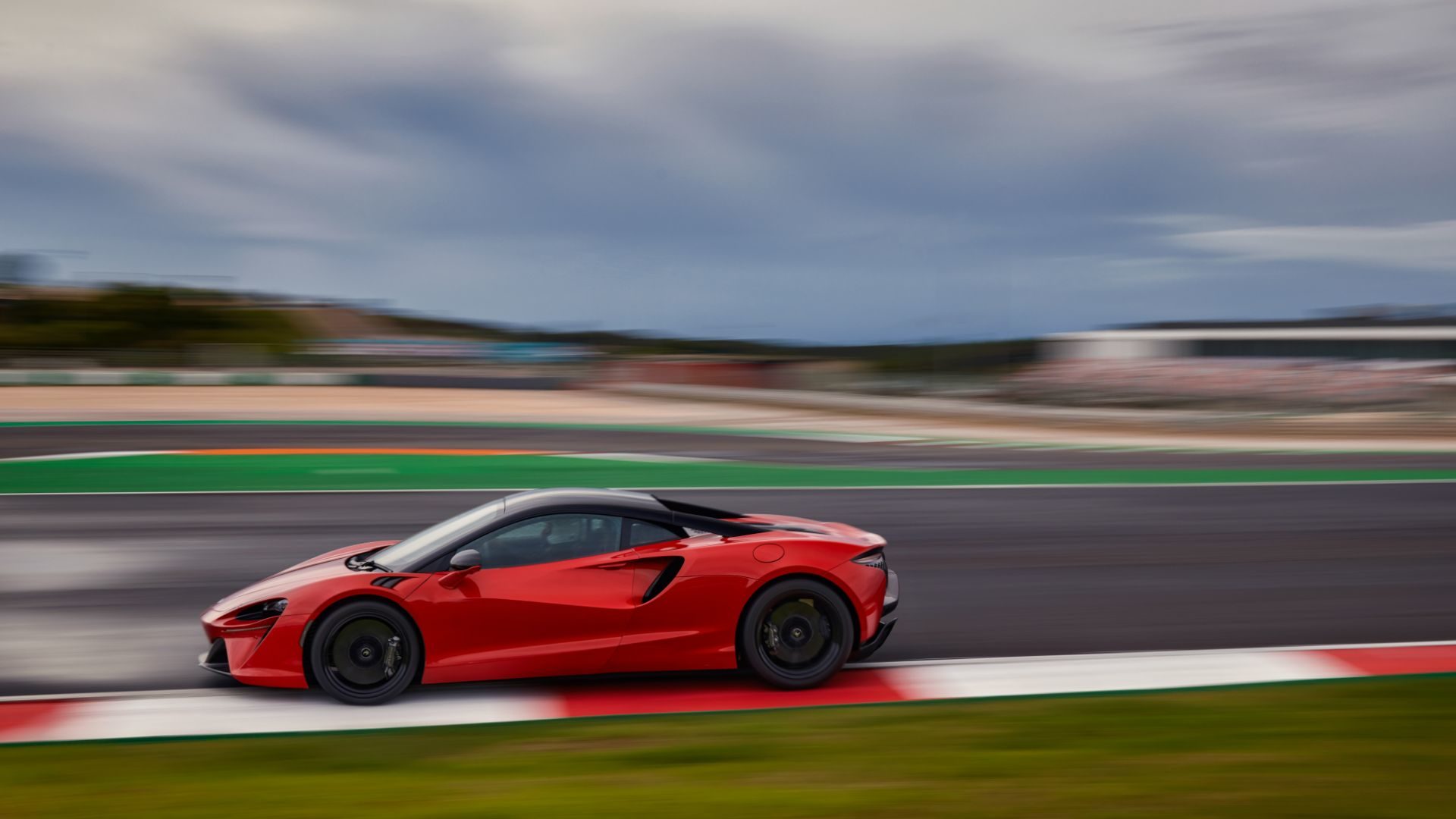
Design director Rob Melville describes the Artura as “technical sculpture with functional jewellery” and a car with “a rare combination of beauty and aggression”.
Melville said the continuation of existing McLaren design themes was deliberate, both to build brand identity and avoid alienating existing customers. Flamboyant new colours such as Flux Green and Ember Orange (pictured) add some pizazz.
In the metal and carbon fibre, the Artura looks compact and very cab-forward. Its hungry side intakes look big enough to swallow a small dog, while the mesh rear panel and brutal diffuser offer a glimpse of the car’s hybrid heart. I particularly liked the optional contrast black roof (also shown here).
Glowing ‘halo’ lights on the door panels offer a dramatic effect at night with the dihedral doors lifted. Coming soon to an Instagram account near you…
No frills, just thrills
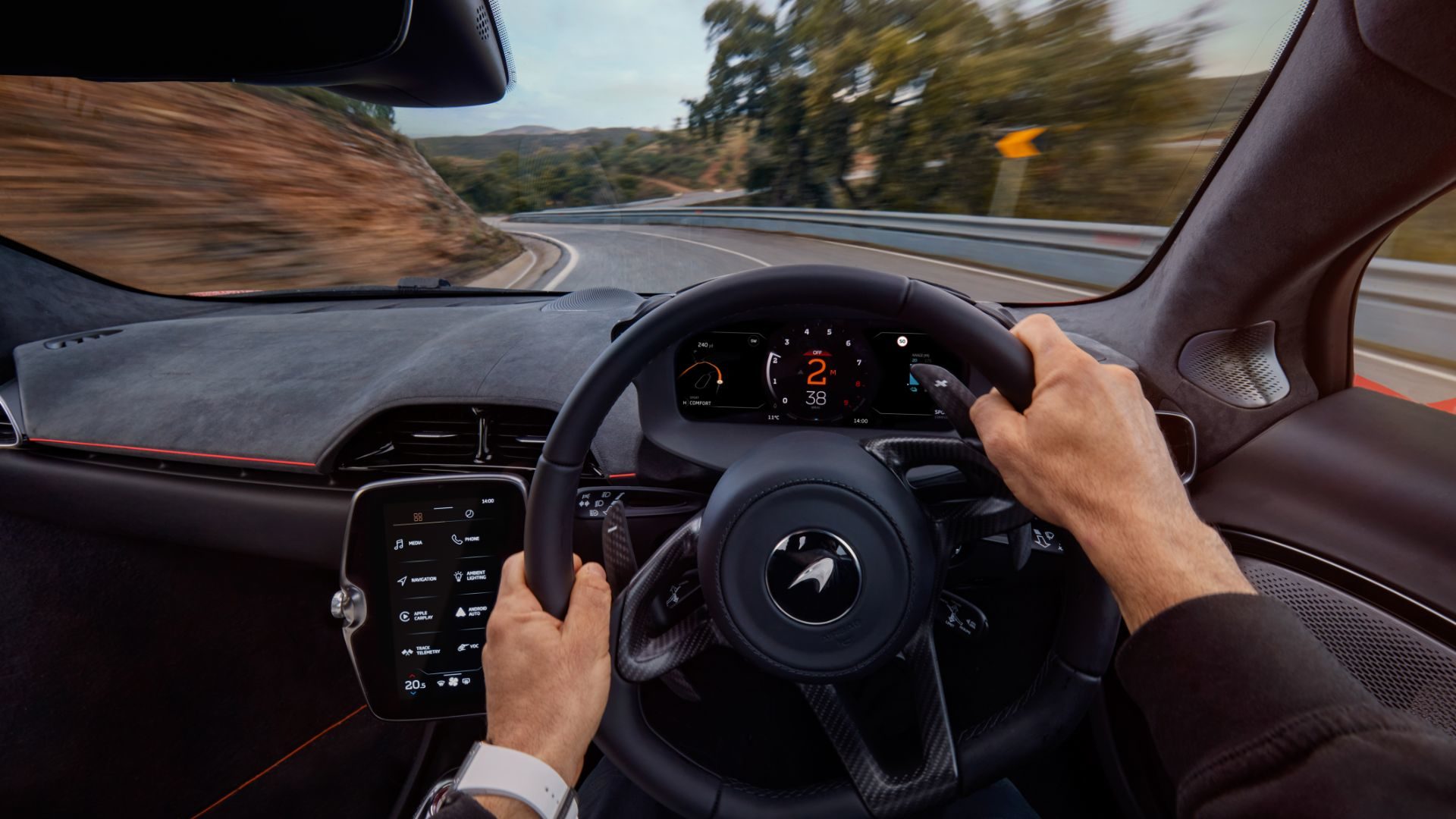
Inside, the Artura has a pared-back, minimalist feel. In complete contrast to cars from Maranello, its steering wheel is devoid of extra controls. ‘Its sole function is to steer the car and provide feedback to the driver,’ says McLaren. Quite.
The driver display moves up and down with the steering column, with rocker switches for the handling and powertrain settings (E-mode, Comfort, Sport and Track) on either side of the binnacle – within easy fingertip reach. And unlike in McLarens to date, there’s no requirement to press an ‘Active’ button to change modes.
An eight-inch touchscreen, angled towards the driver, looks after the infotainment. Its Android-based interface works like a smartphone and is much slicker than the in-house system McLaren used previously. Apple CarPlay and Android Auto connectivity are standard.
Finally, the new hard-shell Clubsport seats deserve a mention. They pivot from the base, offering more support without the need for a moveable backrest. A Comfort seat is also available.
Straight torque
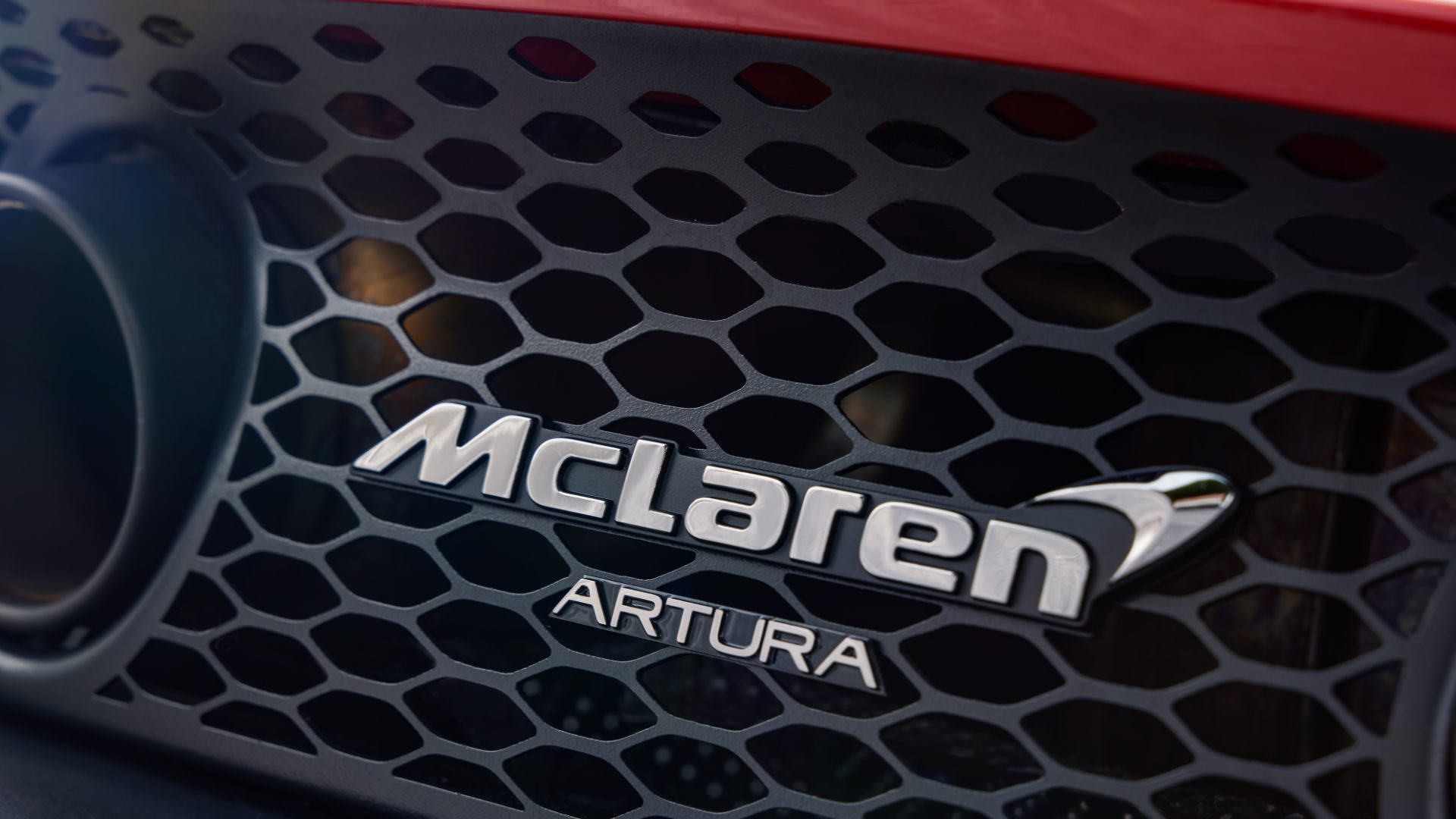
So, how will the Artura drive? We’ll have to wait a few months to find out, but early indications are good. Director of product strategy Jamie Corstorphine explains the electric motor has a “torque infill” effect like the legendary P1, providing throttle response “twice as sharp” as any other McLaren.
This is also the first car from Woking with an electronic differential (“smaller and lighter than a mechanical diff”), which should make it more controllable near the limit. The danger is that it may also dilute the purity of the experience – careful calibration will be key.
Stability under braking was another area of focus for the engineers. The Artura borrows its aluminium calipers and mighty carbon-ceramic discs (390mm front, 380mm rear) from the 600LT.
You’ll have to pay your own track-day tyre bills, but some reassurance is provided by a five-year warranty, with six years of cover for the battery and 10 years for the body.
‘The McLaren promise’
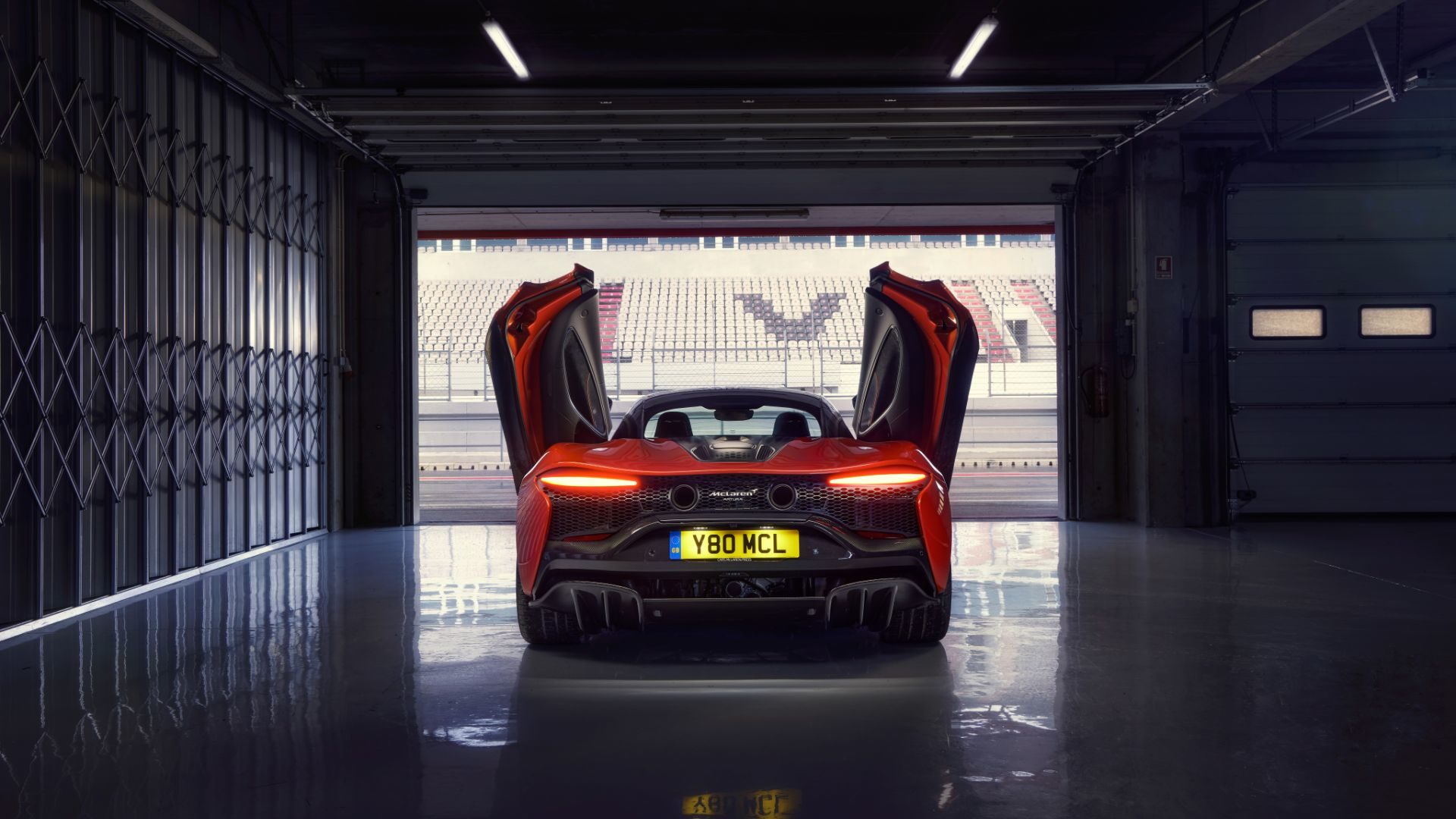
Geoff Grose, chief engineer for the Artura, said: “We wanted to make a thrilling, engaging supercar that asks very few compromises of the driver or the passenger. The Artura truly delivers on the McLaren promise of class-leading driving dynamics and cutting-edge technology. “
McLaren CEO Mike Flewitt, who we interviewed last year, added: “Every drop of McLaren’s experience and expertise has been poured into the Artura. Our all-new, High-Performance Hybrid delivers all of the performance, driver engagement and dynamic excellence for which McLaren is renowned, with the additional benefit of EV driving capability.”
In time, the Artura is likely to spawn a range of vehicles, including a drop-top Spider and track-focused LT. Its hybrid architecture will also form the basis for other supercars, from the 720S replacement upwards. For McLaren, the future starts here.
ALSO READ: